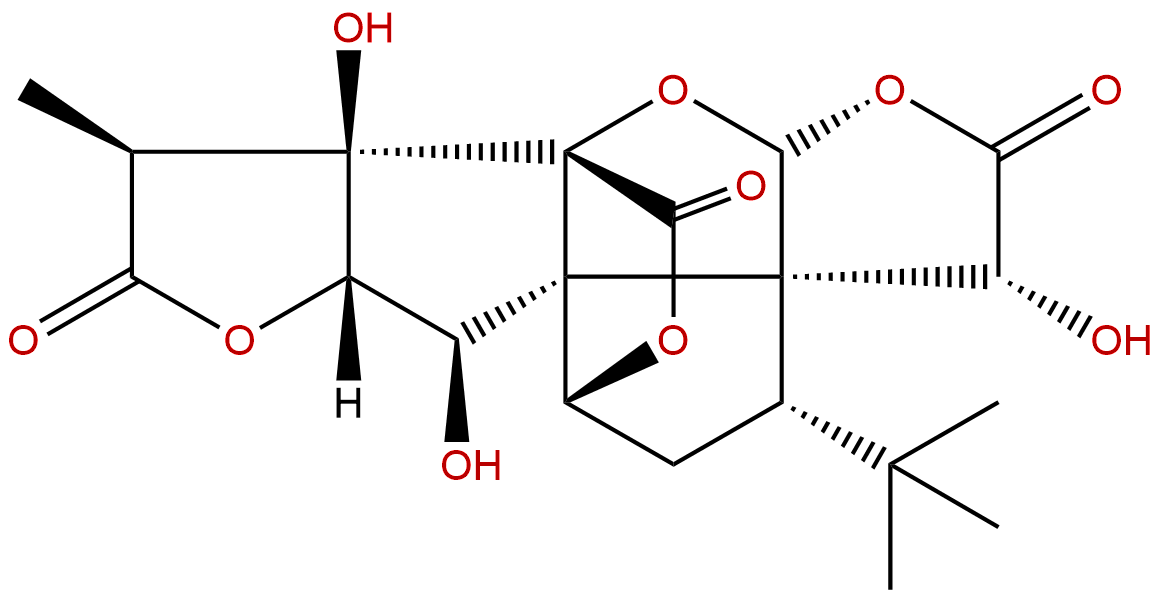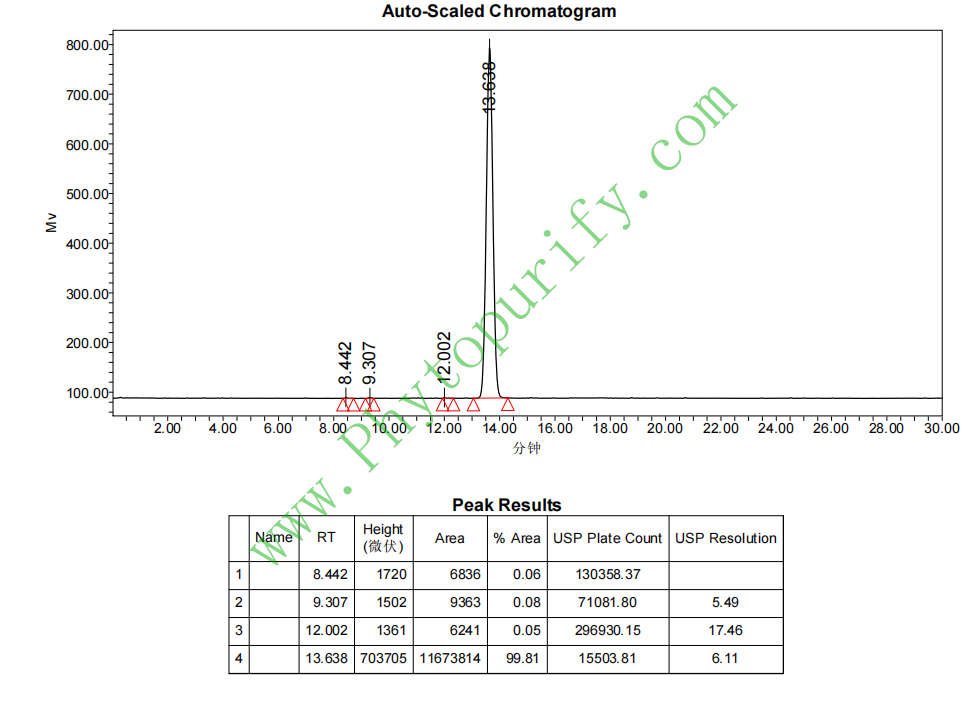
Ginkgolide BCAS No.:15291-77-7
|
||||||||||
 |
|
|
||||||||

| Catalogue No.: | BP0647 |
| Formula: | C20H24O10 |
| Mol Weight: | 424.402 |
Product name: Ginkgolide B
Synonym name: 7-Deoxyginkgolide C
Catalogue No.: BP0647
Cas No.: 15291-77-7
Formula: C20H24O10
Mol Weight: 424.402
Botanical Source: Ginkgo biloba L.
Physical Description:
Type of Compound: Diterpenoids
Purity: 95%~99%
Analysis Method: HPLC-DAD or/and HPLC-ELSD
Identification Method: Mass, NMR
Packing: Brown vial or HDPE plastic bottle
Storage: Store in a well closed container, protected from air and light. Put into refrigerate or freeze for long term storage.
Whenever possible, you should prepare and use solutions on the same day. However, if you need to make up stock solutions in advance, we recommend that you store the solution as aliquots in tightly sealed vials at -20℃. Generally, these will be useable for up to two weeks.
The product could be supplied from milligrams to grams
Inquire for bulk scale.
Description:
Ginkgolide B has potent neuroprotective, anti-arrhythmias, anti-inflammatory and anti-apoptotic effects, it might be a promising drug on inhibiting platelet function and reducing inflammation in atherosclerosis.Ginkgolide B retards the proliferation and development of mouse embryonic stem cells (ESCs) and blastocysts in vitro and causes developmental injury in vivo.
References:
Cutan Ocul Toxicol. 2015 Mar;34(1):53-60.
Inhibitory effects of the platelet-activating factor receptor antagonists, CV-3988 and Ginkgolide B, on alkali burn-induced corneal neovascularization.
Platelet-activating factor (PAF) has been found in various ocular tissues; the activity of PAF depends on the binding to its specific receptor, PAF-receptor. We investigated the therapeutic effects of PAF-receptor antagonists (CV-3988 and Ginkgolide B) on alkali burn-induced corneal neovascularization (CNV).
METHODS AND RESULTS:
CNV was induced by applying a 0.2 N sodium hydroxide (3 µl, NaOH) solution directly on mice corneas. CV-3988 (1 mM/10 µl) and Ginkgolide B (1 mM/10 µl) were administered topically on the corneas three times daily for three consecutive days. CNV was evaluated under a slit-lamp microscope. Corneas were processed for histological, immunohistochemical and reverse transcription polymerase chain reaction analysis. Human umbilical vein endothelial cells were used for the migration and tube formation assay. Application of CV-3988 and Ginkgolide B inhibited CNV caused by alkali burn. CV-3988 and Ginkgolide B attenuated the expression of PAF-receptor mRNA. Alkali injury induced a massively increased intraocular mRNA expression of an angiogenic factor in cornea tissues, whereas these increments were attenuated by the application of CV-3988 and Ginkgolide B.
CONCLUSIONS:
CV-3988 and Ginkgolide B reversed opacity and neovascularization in alkali burn-induced corneas. Our findings suggest that CV-3988 and Ginkgolide B may be therapeutically useful in the treatment of CNV and inflammation.
Eur J Pharmacol. 1989 May 19;164(2):293-302.
Ginkgolide B protects isolated hearts against arrhythmias induced by ischemia but not reperfusion.
The effect of Ginkgolide B (BN 52021), a specific platelet-activating factor (PAF) antagonist, applied in doses of 1.5, 3.0, 6.0 X 10(-5) and 1.2 X 10(-4) mol/l, in comparison to that of metoprolol (10(-5) mol/l) and diltiazem (10(-7) mol/l), two widely used antiarrhythmic agents, on ischemia- and reperfusion-induced arrhythmias and heart functions, such as heart rate (HR), coronary flow (CF), aortic flow (AF), left ventricular developed pressure (LVDP), its first derivative (LVdp/dtmax), and left ventricular end-diastolic pressure (LVEDP) in isolated working rat hearts was examined.
METHODS AND RESULTS:
BN 52021 caused a dose-related protection against dysrhythmias, such as ventricular fibrillation, ventricular tachycardia, and premature ventricular beats induced by ischemia (30 min ligation of the left anterior descending coronary artery). The antiarrhythmic effect of BN 52021 given in a dose of 6.0 X 10(-5) mol/l was comparable to that of diltiazem and superior to the activity of metoprolol. None of the drugs influenced reperfusion-induced rhythm disturbances. BN 52021 did not alter heart functions, while metoprolol reduced (LVEDP only, and diltiazem increased CF, decreased AF, LVDP, and LVdp/dtmax during regional ischemia, indicating a negative inotropic effect. The antiarrhythmic effect of BN 52021 appears to be related to an antagonism of an increase in slow calcium influx induced by PAF in myocardial cells.
CONCLUSIONS:
Similarly to the mechanism of action of established antiarrhythmic drugs, BN 52021 can presumably prevent the re-entry mechanism involved in the development of ischemia-induced rhythm disturbances.
HPLC of Ginkgolide B
